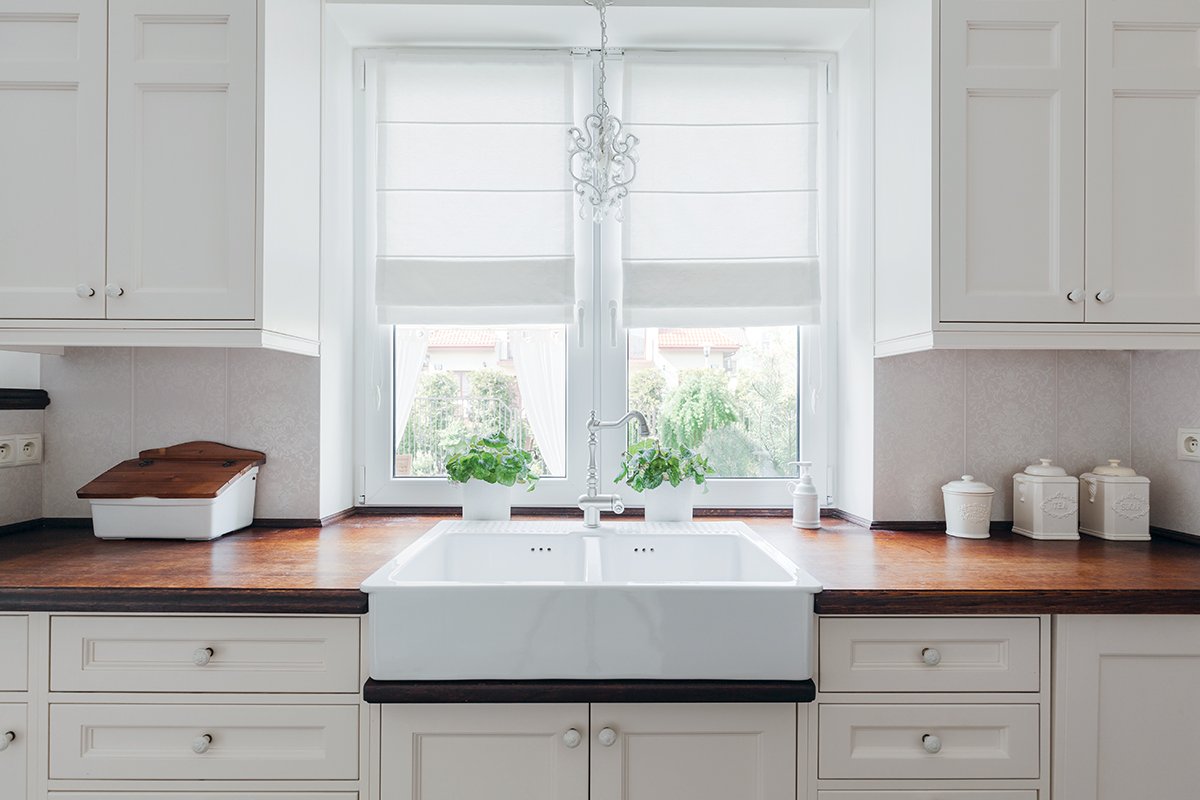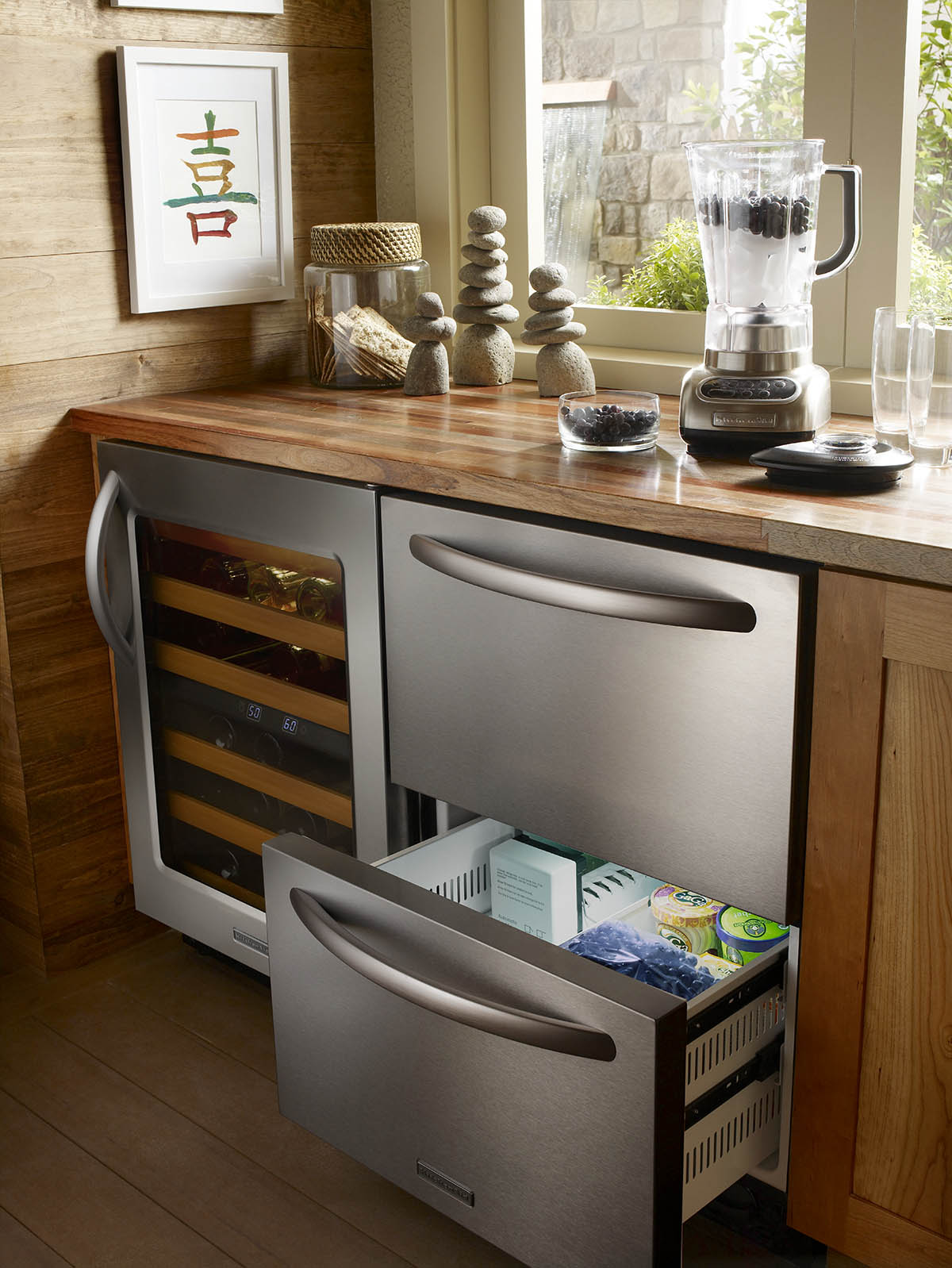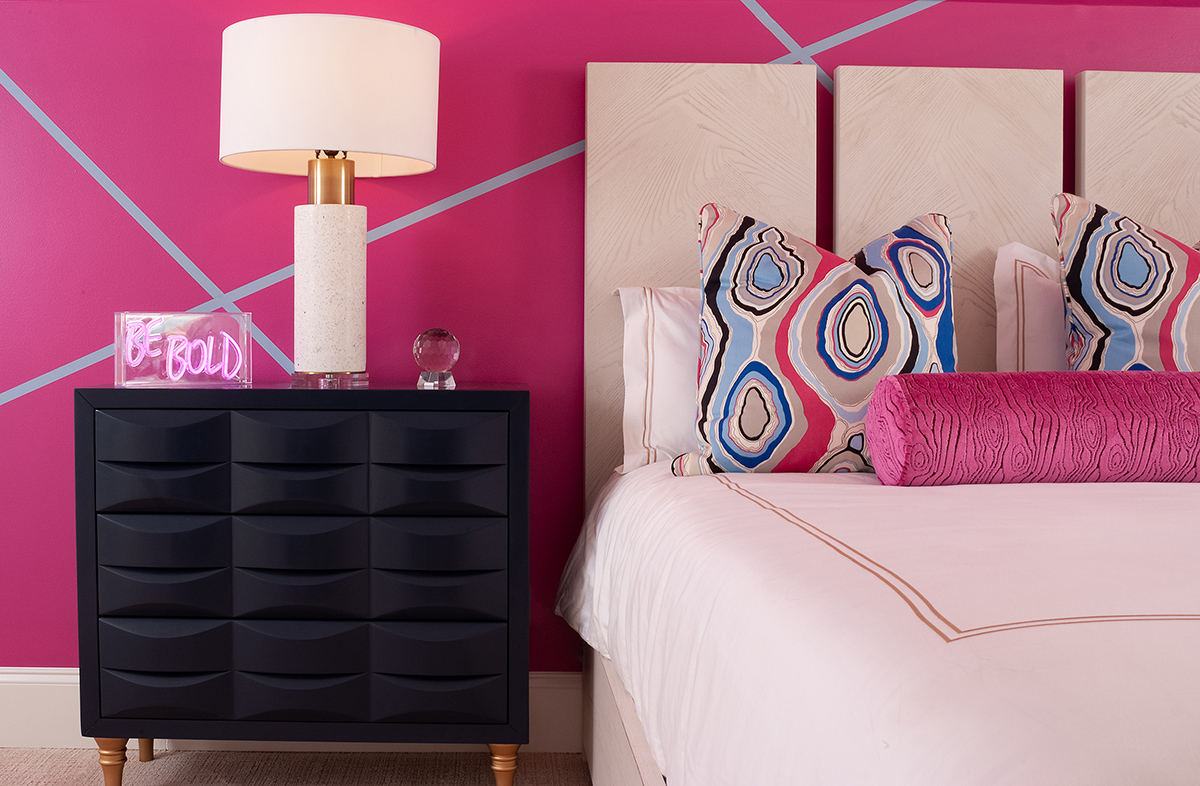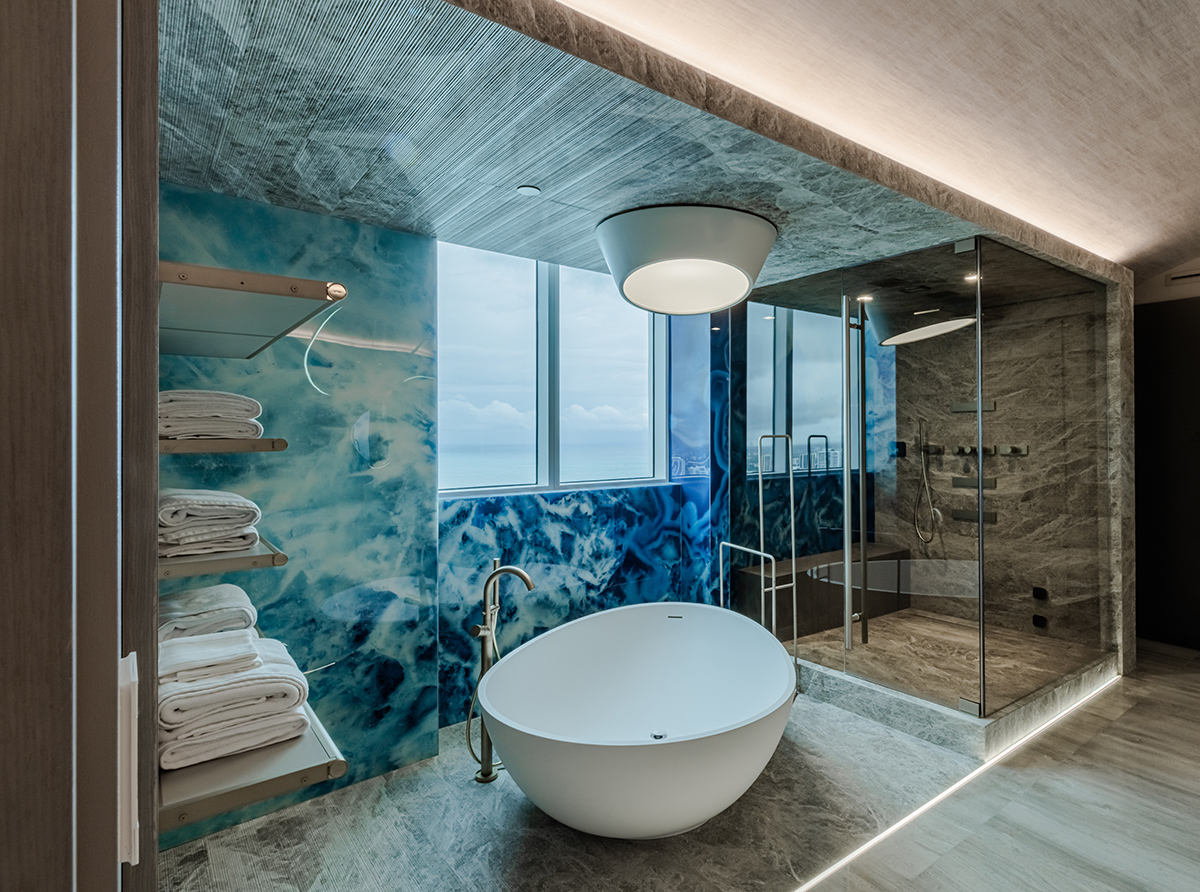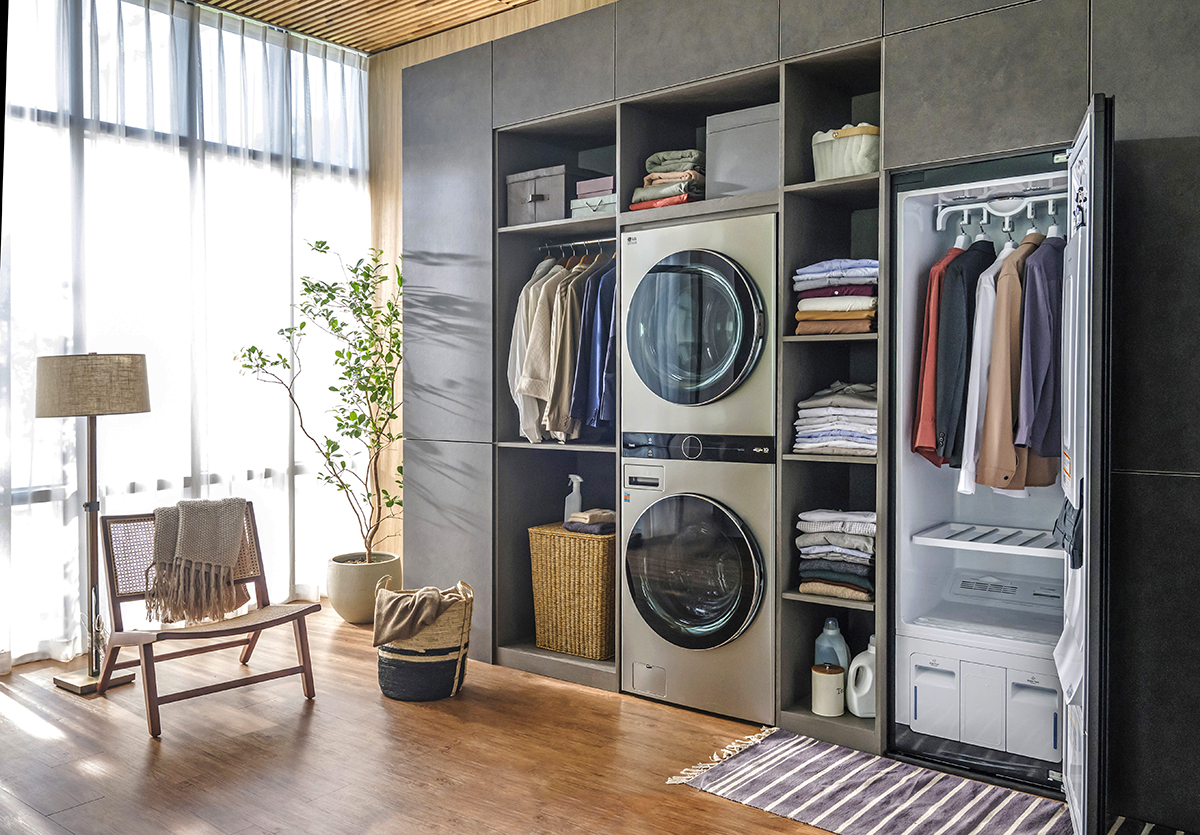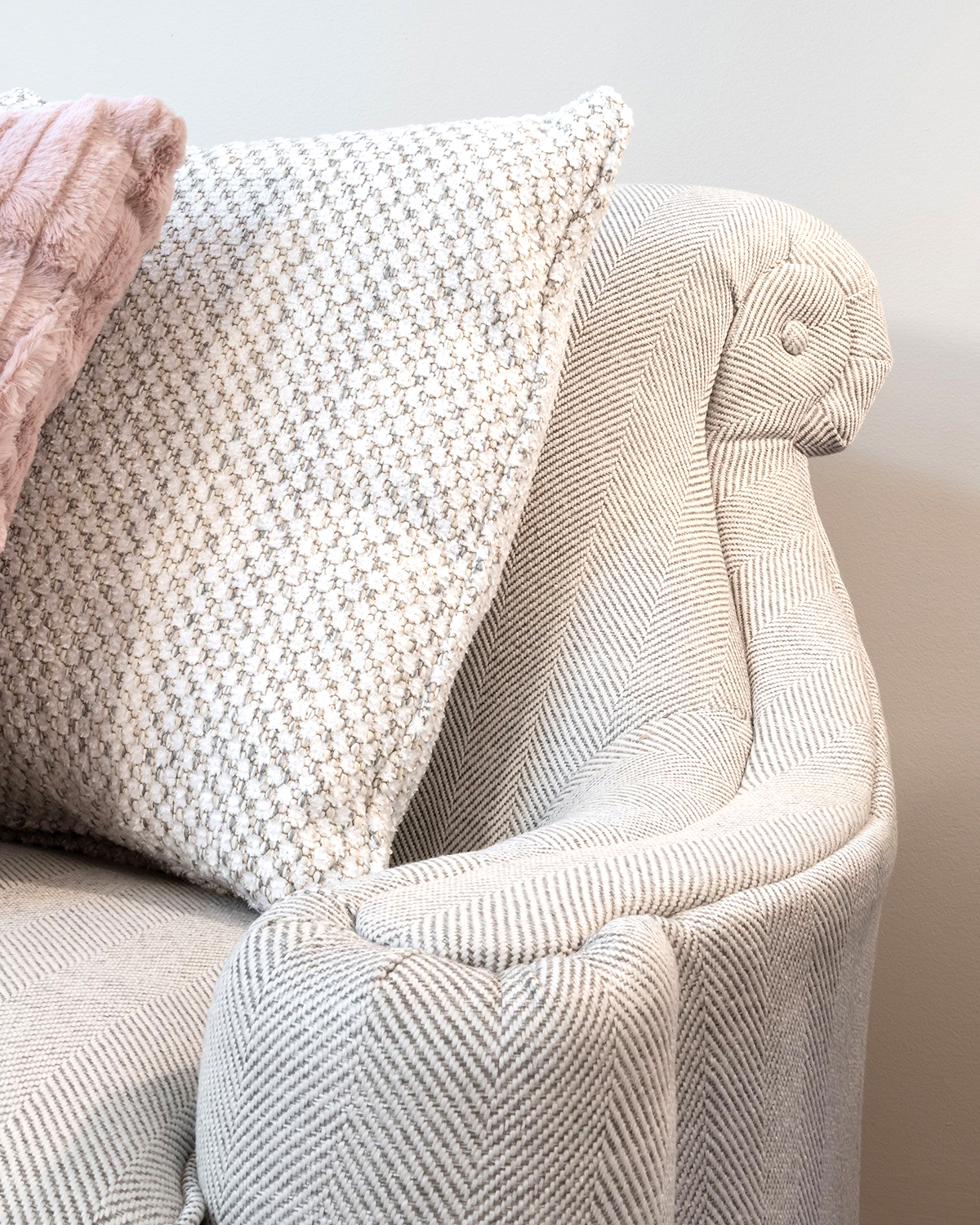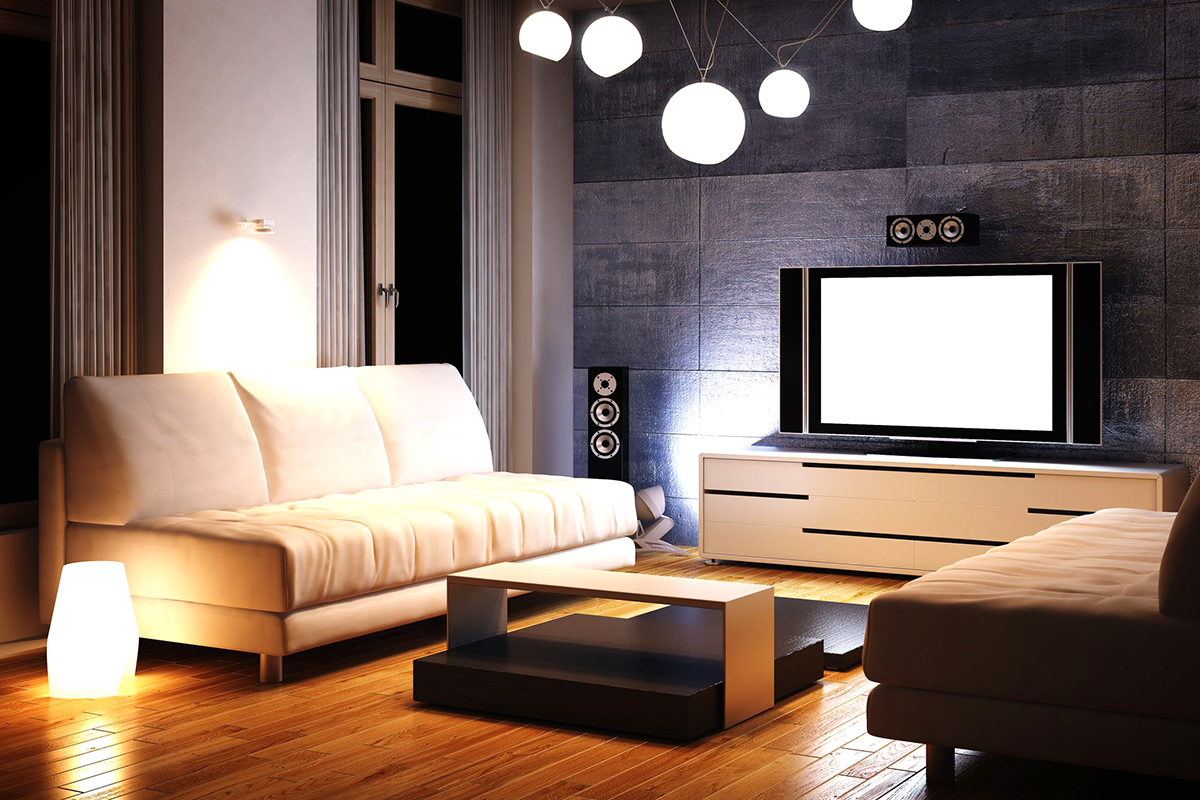WRITER | JEANINE MATLOW
Like many architectural features that help to define a home, windows come in a variety of sizes and shapes. Though smaller styles may be a better fit for certain settings, covering them can call for a little creativity.
Amy Sytsma, owner of Creative Window Treatments in Byron Center, often sees smaller windows in kitchens, bathrooms, master bedrooms, and more. The latest trend, she says, is to install them toward the upper portion of the wall, not so much for the view, but to bring natural light to a space. In this case, they can be dressed with window treatments or not, depending on the proximity of your neighbors and how much the roofline helps to shield the sun.
If you want to embellish a small window with a view, she suggests a shade that closes all the way or one that covers the bottom half for privacy and leaves the top part visible for natural light. For those who prefer fabric treatments, like a café curtain that offers some privacy, Sytsma cautions that many custom curtains are not washable.
Another option to go above a high-use area like a kitchen sink would be sheer fabrics (made of 100 percent polyester) that tend to be washable. Some window coverings are easy to wipe down with a damp cloth to keep dust and residue from products like hair spray from collecting.
Shutters are a classic and timeless choice and include varieties that can handle moisture, great for use in a bathroom. For a visual boost, a valance can supplement another treatment, such as shutters or blinds and even a café curtain, or it can be a standalone feature. “They soften the look of the space, as most fabric does,” says Sytsma.
If the smaller window you wish to cover happens to be in a room with other treatments, she normally suggests choosing the same style to keep them uniform. As for color, a neutral palette may prevail when installing shades or blinds. “You can always add throw pillows or other home décor to bring color into the room, and change them as much as your heart desires,” she adds.
In some cases, it might be wise to make a small window seem larger. This can be accomplished with a layered look, such as shades or blinds with side panels positioned outside or beyond the pane to the inside edge of the trim.
Additional combinations include a roller shade with panels on either side. For blinds inside the window topped by a valance, Sytsma recommends mounting the valance at least four inches above the trim, which makes the window look taller. To accentuate café curtains, try adding a valance in the same fabric.
Functional needs should always be considered. Though blinds offer privacy while allowing some light to filter through, they are meant to be louvered, not raised and lowered all of the time. If you’d like to clear the window space to see out with no interference, cellular shades can be a great option since their stack is small.
It’s also important to know that the way the windows are trimmed can dictate the treatments. While new homes often feature attractive styles, panels or draperies have to attach somewhere, so you may end up with holes in the trim or having to cover it completely.
Lastly, Sytsma says those building a new home might want to consider motorized coverings, which can come in handy for smaller windows that are hard to reach. The best time to talk to a specialist (for nonbattery treatments) is in the beginning, so the builder and electrician can be involved in the process.


